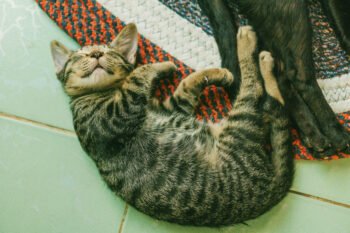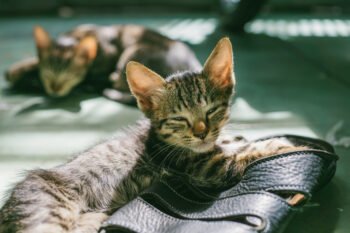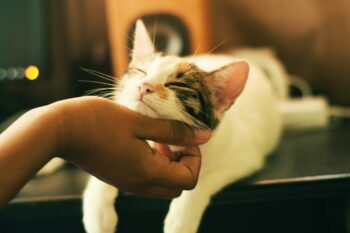Fleas can be a major problem for cat owners. Not only are these tiny creatures a nuisance, they are also the cause of many diseases such as flea anemia, flea bite dermatitis and tapeworm infection. Therefore, strict flea control is necessary for the good health of every cat.
Eradicating fleas from our animals and our homes (and you must do both) requires the use of insecticides (mousses, spot-ons, oral suspensions, powders or spray mists), but a new generation of products are much safer than the old poisons we used to use. Still, while there are many safe insecticide products available for use on cats, caution must be used, because cats are generally more sensitive to most insecticides. Cat owners should be extremely careful when using flea products on or around their cats. Products should be used strictly according to their label directions.
Here are some guidelines for cat owners to follow when choosing and applying a flea control product:
- Never use insecticides on very young kittens, pregnant queens, debilitated or elderly cats without consulting your veterinarian.
With such cats, it may be better to avoid some insecticides entirely. Instead, you could comb the fleas off the cat with a flea comb, then submerge the fleas in a small container of soapy water. This would also be a good alternative for cats who love being groomed but who violently refuse baths or the application of a spray. - Before using ANY product on your cat, read all the label instructions. If you do not completely understand the instructions, contact the manufacturer or your veterinarian for clarification. Observe the species and age requirements listed on the label. NEVER use a product labeled “for use on dogs only” on your cats. Cats react very differently than dogs to some products.
- Use caution when using products that contain organophosphates in your house or on your cat. Cats are more sensitive to organophosphate insecticides than most other animals. Currently, there are few flea products in the United States labeled for use on cats that contain organophosphates as an active ingredient. The few that can be used on cats contain a small concentration of organophosphate. However, many household sprays and products that are specifically labeled “for use on dogs only” are widely available. Again, avoid these dog products! In some cases, exposed cats can start showing signs of toxicity within hours. Symptoms include drooling, depression, labored breathing, weakness and convulsions. Without prompt and proper treatment, repeated exposure could lead to the animal’s death. With appropriate treatment by a veterinarian, the survival chances are much higher.
- NEVER use flea control products that contain permethrin on your cats, unless they are specifically labeled for use on cats. There are some products that are labeled for use on cats that contain small concentrations of permethrin, usually less than 0.1 percent. When used according to the label instructions, these can be used safely on cats. However, there are many permethrin products available over the counter that are labeled for use on dogs only. These contain high concentrations (45-60%) of permethrin insecticide. These permethrin products have a good range of safety when used on dogs, but even a few drops of concentrated permethrin could be lethal to cats. The reason for this species difference is yet unknown. Exposed cats can develop uncontrollable seizures within hours of concentrated permethrin application. The fatality rate of untreated cats exposed to such products is very high. Proper treatment by a veterinarian can often prevent death.
- Always use caution when using shampoos, sprays, topical spot-ons or mousse near your cat’s eyes, ears and genitalia. Inactive ingredients can cause irritation to these sensitive tissues. When using a fogger or a home premise spray, make sure to remove all cats from the house for the time period specified on the container. Food and water bowls and the litter box should also be removed from the area. Allow time for the product to dry completely before returning your cats to your home. Open windows or use fans to air out the household before returning your cats to the treated area. Strong fumes can be irritating to your cat’s eyes and upper respiratory system. If you are uncertain about using of any household product, contact the product’s manufacturer or your veterinarian to explain the directions BEFORE you use the product.
- Insect growth regulators such as lufenuron, methoprene and pyriproxyfen can be used in combination or alone with flea control products. They can help break the flea life cycle by inhibiting flea maturation. Growth regulators have minimal adverse effects and can be quite effective when used in combination with adult flea insecticides.
- Just because a product is labeled as “natural” does not mean it is completely safe. Many “natural” flea control products can be harmful when used inappropriately on cats. For example, d-limonene and linalool are citrus extracts that are used as flea control agents. Although they are natural products, they still can have serious side effects if used on sensitive cats or if used improperly.
- Observe your cat closely after using any flea control product. If your cat exhibits unusual behavior, or becomes depressed, weak or uncoordinated, seek veterinary advice immediately.
Once again, read the label. This could save the life of your cat!







